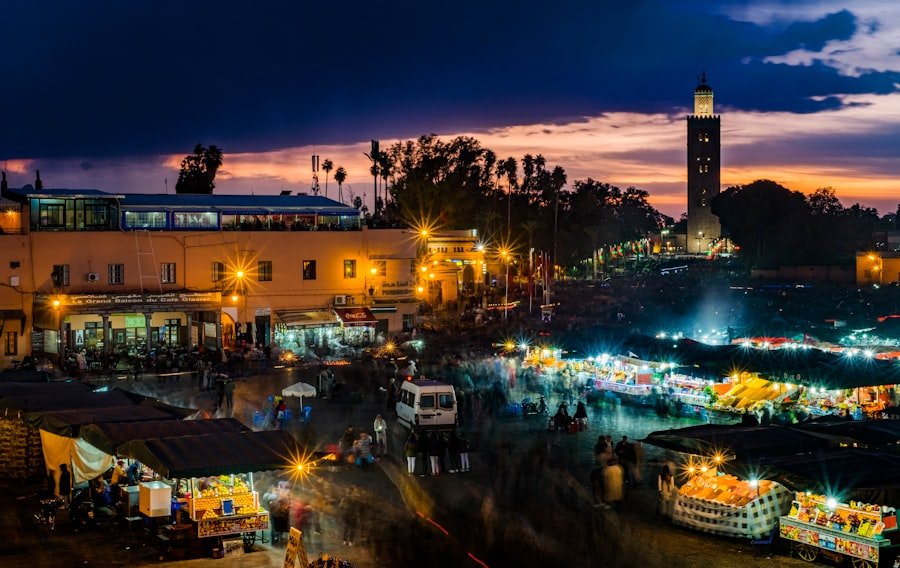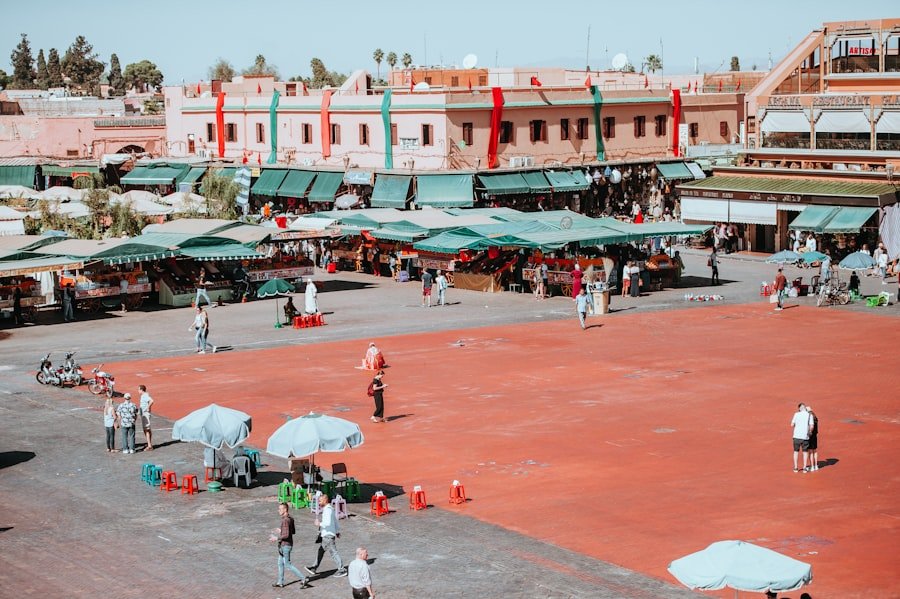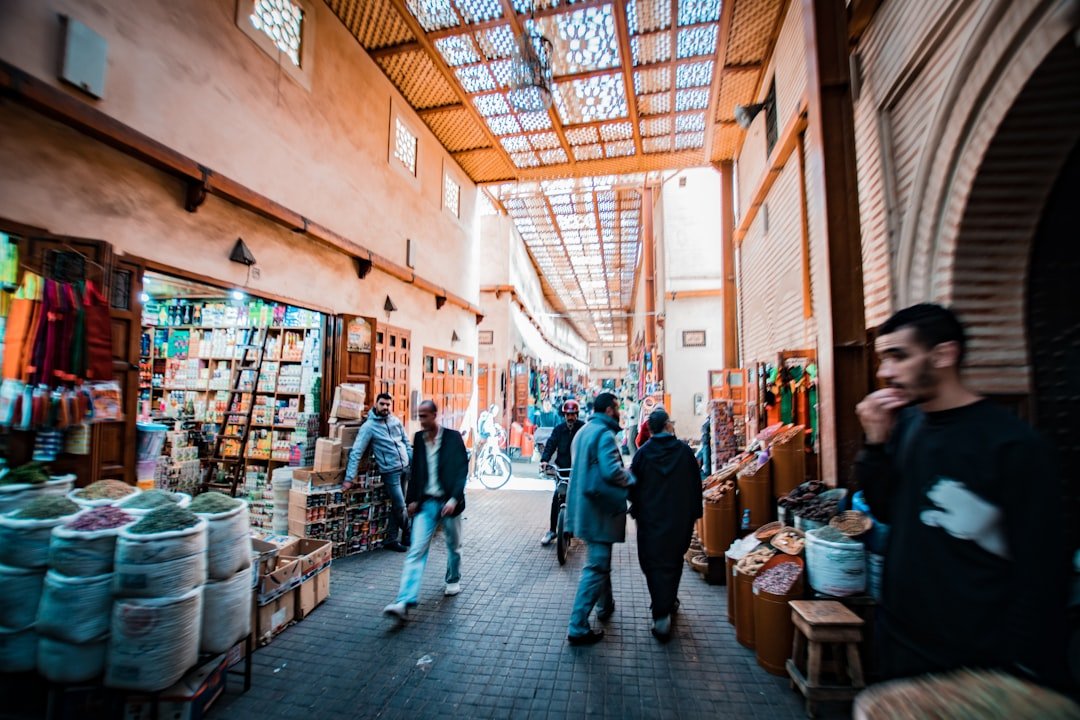Venice, a city renowned for its intricate canals and stunning architecture, experiences a unique climate that significantly influences the travel experience. The city is situated in a humid subtropical climate zone, characterized by hot summers and mild winters. The average temperature in July, the warmest month, can soar to around 30°C (86°F), while January, the coldest month, typically sees temperatures hovering around 0°C (32°F).
Rainfall is distributed throughout the year, but the late autumn months of October and November often witness the highest precipitation levels. This seasonal variability can lead to flooding, known as “acqua alta,” particularly in the fall and spring months, when high tides coincide with heavy rainfall. Understanding these weather patterns is crucial for travelers planning their visit.
The summer months, while vibrant and bustling with activity, can also be stiflingly hot and humid, making outdoor exploration less enjoyable. Conversely, winter offers a quieter atmosphere, with fewer tourists and a chance to experience Venice’s charm in a more intimate setting. However, visitors should be prepared for the possibility of chilly winds and occasional rain.
The transitional seasons of spring and autumn present a balanced climate, with mild temperatures and fewer crowds, making them ideal for those seeking a more comfortable experience while exploring the city’s rich history and culture.
Key Takeaways
- Venice experiences a humid subtropical climate with hot summers and cold winters, and is prone to flooding during the winter months.
- The peak tourist seasons in Venice are during the summer months and during the Carnival in February, resulting in large crowds and higher prices.
- Off-season travel in Venice offers benefits such as fewer crowds and lower prices, but drawbacks include limited opening hours for attractions and the possibility of flooding.
- Venice hosts special events and festivals throughout the year, including the Venice Biennale, the Festa del Redentore, and the Venice Film Festival.
- The best time to enjoy outdoor activities and sightseeing in Venice is during the spring and fall when the weather is mild and the crowds are smaller.
- Budget-friendly travel tips for visiting Venice include staying in accommodations outside the city center, dining at local trattorias, and taking advantage of the Venice Card for discounted transportation and attractions.
- Navigating Venice’s transportation system can be done by using vaporettos (water buses) and water taxis, and walking is often the best way to explore the city.
- When choosing the best time for your Venice trip, consider factors such as weather preferences, budget, and tolerance for crowds to make the most of your visit.
Peak Tourist Seasons and Crowds in Venice
Peak Tourist Seasons in Venice
Venice’s peak tourist seasons are primarily during the summer months of June through August and during major holidays such as Christmas and Easter. During these times, the city is inundated with visitors from around the globe, drawn by its iconic landmarks like St. Mark’s Basilica, the Doge’s Palace, and the Grand Canal.
The Drawbacks of Peak Season
The influx of tourists can lead to long lines at popular attractions, crowded streets, and a general sense of hustle and bustle that may detract from the serene beauty of the city. Hotel prices also tend to skyrocket during these peak periods, making it essential for travelers to plan ahead if they wish to visit during this time.
A More Manageable Experience in the Shoulder Seasons
In contrast, the shoulder seasons of spring (April to June) and autumn (September to October) offer a more manageable crowd experience. During these months, visitors can enjoy pleasant weather while avoiding the overwhelming throngs typical of summer. Attractions are more accessible, allowing for a more leisurely exploration of Venice’s hidden gems.
Planning Your Visit for Maximum Enjoyment
However, even during these shoulder seasons, certain weekends or holidays can still attract significant crowds, particularly if they coincide with local events or festivals. Therefore, understanding the timing of your visit is crucial for maximizing enjoyment while minimizing stress.
Off-Season Travel: Benefits and Drawbacks

Traveling to Venice during the off-season—typically from November to March—presents both advantages and disadvantages that potential visitors should carefully consider. One of the most significant benefits is the dramatic reduction in tourist crowds. With fewer people navigating the narrow streets and canals, travelers can enjoy a more authentic experience of Venice’s charm.
This quieter atmosphere allows for spontaneous exploration without the pressure of long lines or crowded spaces. Additionally, many hotels and restaurants offer lower rates during this period, making it an attractive option for budget-conscious travelers. However, off-season travel does come with its drawbacks.
The weather can be unpredictable; while some days may be crisp and clear, others can be cold and rainy. Visitors should be prepared for potential flooding during high tide events, which can disrupt travel plans and limit access to certain areas of the city. Furthermore, some attractions may have reduced hours or be closed entirely during the off-season, which could impact the overall experience.
It’s essential for travelers to research their itinerary thoroughly to ensure that they can still enjoy the highlights of Venice despite these seasonal challenges.
Special Events and Festivals in Venice Throughout the Year
| Event | Date | Description |
|---|---|---|
| Carnival of Venice | February | A world-famous festival with masked balls, parades, and street performances. |
| Regata Storica | September | An annual rowing race and historical parade along the Grand Canal. |
| Venice Film Festival | August-September | One of the oldest film festivals in the world, showcasing international cinema. |
| Feast of the Redeemer | July | A religious festival with fireworks and a temporary bridge connecting Giudecca to the main island. |
Venice is a city steeped in tradition, and its calendar is filled with vibrant events and festivals that showcase its rich cultural heritage. One of the most famous events is the Venice Carnival, held annually in February or early March. This extravagant celebration features elaborate masks, costumes, parades, and street performances that transform the city into a fantastical realm.
Visitors flock to witness this spectacle, which culminates in a grand ball at historic venues throughout Venice. Another significant event is the Festa del Redentore, celebrated on the third Sunday in July. This festival commemorates the end of a devastating plague in the 16th century and features a stunning fireworks display over the Giudecca Canal.
Locals and tourists alike gather on boats or along the waterfront to enjoy the festivities, which include traditional food stalls and music. Additionally, Venice hosts various art exhibitions and film festivals throughout the year, such as the Venice Film Festival in late August to early September, attracting filmmakers and cinephiles from around the world. These events not only provide entertainment but also offer insight into Venetian culture and community spirit.
Best Time to Enjoy Outdoor Activities and Sightseeing
For those eager to explore Venice’s outdoor offerings—such as its picturesque canals, charming piazzas, and stunning architecture—the best times are typically during spring (April to June) and early autumn (September to October). During these months, temperatures are generally mild and pleasant, making it ideal for leisurely strolls along the canals or enjoying a gondola ride without the sweltering heat of summer. The blooming flowers in spring add an extra layer of beauty to the city’s already stunning scenery.
Moreover, these shoulder seasons often feature clear skies and less humidity compared to summer months. This weather is perfect for outdoor activities like visiting Murano and Burano islands or taking part in guided walking tours that delve into Venice’s history and hidden corners. Additionally, many outdoor cafes set up tables along the canals during these times, allowing visitors to savor local cuisine while soaking in the vibrant atmosphere.
However, it’s important to note that even during these ideal months, visitors should remain flexible with their plans due to occasional rain showers or sudden changes in weather.
Budget-Friendly Travel Tips for Visiting Venice

Traveling to Venice on a budget is entirely feasible with some strategic planning. One effective way to save money is by visiting during the off-peak season when accommodation prices drop significantly. Many hotels offer discounts or special packages during this time, allowing travelers to enjoy comfortable lodging without breaking the bank.
Additionally, consider staying in nearby areas such as Mestre or Lido di Venezia; these locations provide easy access to Venice via public transportation while often being more affordable. Dining can also be a significant expense in Venice; however, there are ways to enjoy local cuisine without overspending. Opting for cicchetti—small plates typically served in local bacari (wine bars)—is an excellent way to sample Venetian flavors at a lower cost than traditional sit-down meals.
Furthermore, purchasing food from local markets or bakeries can provide delicious options for picnics along the canals or in one of Venice’s many parks. Lastly, taking advantage of free attractions such as wandering through St. Mark’s Square or exploring lesser-known neighborhoods can enhance your experience without additional costs.
Tips for Navigating Venice’s Transportation System
Navigating Venice’s unique transportation system can initially seem daunting due to its labyrinthine layout of canals and narrow streets. However, understanding how to utilize public transport effectively can enhance your experience significantly. The Vaporetto—Venice’s water bus—is an essential mode of transport that connects various parts of the city as well as nearby islands like Murano and Burano.
Purchasing a multi-day pass can be economical if you plan on using this service frequently during your stay. Walking is another excellent way to explore Venice; many attractions are within walking distance of each other. The city’s compact size allows for leisurely strolls through its picturesque streets while discovering hidden gems along the way.
It’s advisable to carry a map or download navigation apps that work offline since Wi-Fi may not always be available throughout the city. Additionally, be prepared for bridges; Venice is known for its numerous bridges that connect different areas but can be challenging for those with mobility issues or heavy luggage.
Final Considerations: Choosing the Best Time for Your Venice Trip
When deciding on the best time for your trip to Venice, it’s essential to weigh personal preferences against practical considerations such as weather conditions, crowd levels, and budget constraints. If you thrive in vibrant atmospheres filled with energy and excitement, visiting during peak tourist seasons may suit you best despite potential crowds and higher prices. Conversely, if you prefer a more tranquil experience where you can immerse yourself in local culture without distractions from large groups of tourists, consider planning your visit during the off-season or shoulder months.
Ultimately, your choice will depend on what you hope to gain from your Venetian adventure—whether it’s indulging in cultural festivities or simply enjoying serene moments by the canals. Regardless of when you choose to visit, understanding Venice’s unique climate patterns and transportation options will help ensure a memorable experience filled with exploration and discovery amidst this enchanting city’s timeless beauty.
When planning the best time to travel to Venice, Italy, it’s important to consider the weather and crowds. According to a related article on TakeTravelInfo, having the right footwear can make all the difference when exploring the city’s cobblestone streets and canals. Waterproof sneakers are a great option for staying comfortable and dry while navigating Venice’s unique landscape.
FAQs
What is the best time to travel to Venice, Italy?
The best time to travel to Venice, Italy is during the spring (April to June) and fall (September to November) when the weather is mild and the city is less crowded.
What is the weather like in Venice during the best time to travel?
During the best time to travel to Venice, Italy, the weather is mild with temperatures ranging from 15°C to 25°C. There is less chance of rain and the city is less humid.
When is the peak tourist season in Venice?
The peak tourist season in Venice is during the summer months (July and August) when the city is crowded with tourists and the weather can be hot and humid.
What are the advantages of traveling to Venice during the off-peak season?
Traveling to Venice during the off-peak season (spring and fall) allows for fewer crowds, lower accommodation prices, and a more authentic experience of the city.
Are there any events or festivals in Venice during the best time to travel?
During the best time to travel to Venice, Italy, visitors can experience events such as the Festa della Sensa (Feast of the Ascension) in May and the Venice Biennale, an international art exhibition held from May to November.
